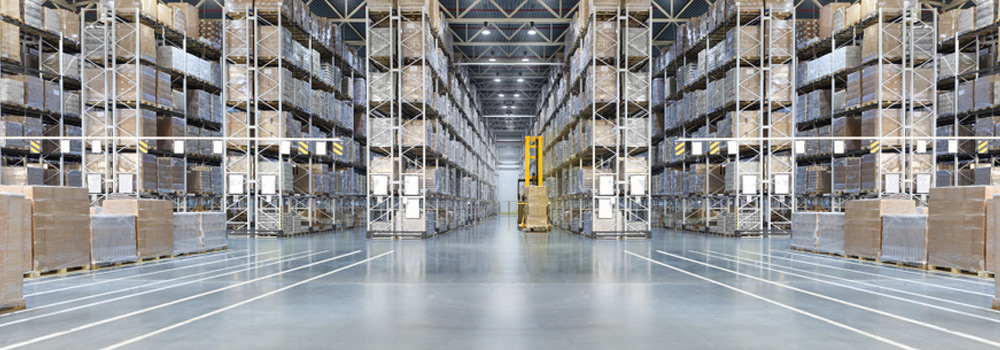From: Forbes
Date: July 8, 2019
By: Larry Genet
Eight Things To Know About Industrial Real Estate
Everyone knows that retail is evolving, and common thought says that retail that is not customer-focused will fail. Brick-and-mortar retailers with exceptional customer service or experiential offerings and food-related retailers will thrive. Contributing to this transformation is the rise in e-commerce. The popularity of e-commerce is not just hype; it is real and only just getting started. Our internal research has found that industrial and logistics is the most attractive sector for real estate investment for three years in a row. Companies like Amazon and Walmart will continue to force the evolution forward.
As a commercial real estate broker, these eight data points come up on every deal I do. If you are looking to capitalize on this evolution by investing in or selling/leasing warehouses as a real estate agent, start by making sure you have a solid understanding of these key factors.
1. Location
Let’s start with the obvious: Location is critical. The closer you are to wealth and large population centers, the better off you will be. Equally important is the proximity to highways and the area’s largest generators of commerce (think airports, seaports, hospitals, etc.). The better the location, the more desirable the property for potential investors and owners.
2. Big-Ticket Items
For industrial properties, you always want to ask about the roof and the HVAC or air conditioning units. If the roof is close to or older than 10 years, expect a ding in the valuation. The valuation can be effected by how large the roof is and what repairs, if any, will be needed. The first part of the roof to break down is the flashing or edges, so pay close attention there. Other issues can include standing water or perforations from equipment installations.
In South Florida where I am located, new roofs can cost anywhere between $7 to $9 per square foot. HVAC units 10 years or older may be functional but might require maintenance. These costs vary and can easily be determined by an HVAC repair company; these companies generally provide free estimates upon request. These repair amounts must be considered prior to an investment or lease.
3. Construction Type And Features
Concrete block structure (CBS) is the most common material used to construct warehouses here in South Florida. Butler Style are generally half CBS and half metal or 100% metal. The most advanced material being used today is concrete tilt-walls. They come prefabricated and predesigned so you can essentially “tilt” them up into place. Longevity and functionality are important considerations in an industrial property. Metal has the lowest score, followed by CBS, with the best system being tilt-wall.
4. Loading Types
The two primary types of loading are dock high and grade level, also known as “drive-in.” Dock high is designed for larger trucks, such as 53-foot-long semi-tractor trailers that are 18-wheelers. Dock high loading allows trucks to back up to the building and unload safely, quickly and efficiently. Older buildings tend to offer grade-level loading, as these properties were designed before modern trucks were on the road. However, today these buildings are used by specialty companies and smaller operators that do not yet utilize fleets of semis. As an example, a company that converts or repairs food trucks would find a grade-level building highly desirable, whereas a dock high building would not work for their use unless heavily modified.
5. Ceiling Clear Heights
Sophisticated warehouse tenants continue to demand taller buildings in order to maximize the amount of product a location can hold. Generally, tenants pay for floor space on a per-square-foot basis, not cubic footage. Therefore, the taller the warehouse, the better the value for a tenant. Heights start as low as 10 to 14 feet. Nowadays, the industry standard for Class A space is a minimum of 32-foot clear heights to the lowest point of the ceiling. In South Florida, I typically find a swing in rents from $3 to $4 per square foot for Class A space compared to 10- to 14-foot clear height options.
6. Parking
When it comes to parking, the more, the better. Typically, warehouses will have one parking space per 1,000 square feet. If you are lucky enough to have excess parking, stalls can be rented out separately. Or, if large enough, parking areas can be fenced and used as a storage yard or to expand a building. A parking stall in South Florida can fetch around $150 per spot per month, and a storage yard can garner $10,000 per month per acre or sometimes much more, depending on the location and if it has a building.
7. Electrical Infrastructure
Knowing the amount of electrical power a warehouse contains is critical. There are two main components to measuring power: amperage (amps) and voltage (volts or V). Amps can vary from 200 into the thousands for heavy manufacturing buildings. Volts are measured in three standard sizes: 120V, 220V and 480V. Think of volts as pressure — the higher the number, the harder a circuit can push electrons. Preferred voltage for today’s modern machinery is 480V. Generally, the higher the amps, the more valuable your space will be to manufacturing companies or distributors that run sophisticated conveyor and sorting systems.
8. Income
Income is as self-explanatory as location, but it’s worth touching on because there can be a few nuances. Generally, a fully leased building will sell to an investor, whereas a vacant or partially vacant building can be considered by a business owner (also known as an owner-user) for the company’s new home. Owner-users are less concerned with income and need to make sure there is enough vacancy for their own use. Investors today expect capitalization rates (returns) from 4.5% on the low end to 8% on the higher end. The swing will have to do with the risk, location and quality associated with each individual property. Value-add investors are looking for double-digit returns and are willing to take on more risk than normal.
Read Full Article: https://www.forbes.com/sites/forbesrealestatecouncil/2019/07/08/eight-things-to-know-about-industrial-real-estate/
Contact Us for More Information
"*" indicates required fields



